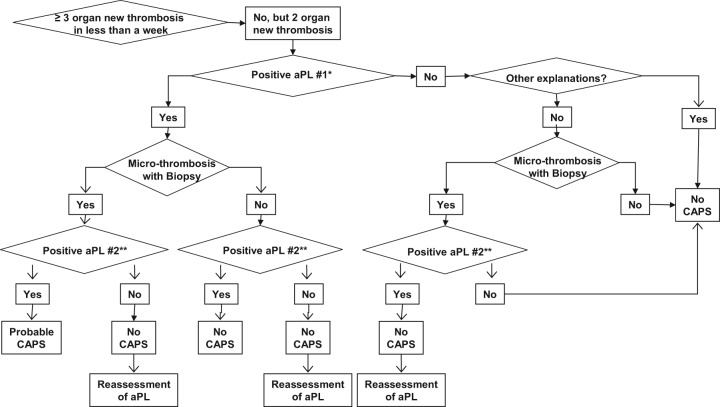Algorithm C.
Catastrophic antiphospholipid syndrome (CAPS) diagnosis in patients without history of antiphospholipid syndrome (APS) or persistent antiphospholipid antibody (aPL) positivity [Erkan et al. 2010]. Reprinted from [Erkan et al. 2010] with permissions from Elsevier.
*Our recommendation for the definition of ‘positive aPL’ is: lupus anticoagulant (LA) test positive based on the guidelines of International Society of Thrombosis and Haemostasis [Pengo et al. 2009]; anticardiolipin antibody (aCL) IgG/M ≥40 U, and/or anti-β2-glycoprotein-I antibody (aβ2GPI) IgG/M ≥40 U. Caution and further assessment(s) are required if: (a) LA test is performed in anticoagulated patients; (b) aCL or aβ2GPI IgG/M titers are in the range of 20–39 U; and/or (c) aCL or aβ2GPI IgA is the only positive aPL enzyme-linked immunosorbent assay (ELISA) test.
**‘Positive aPL’ twice 12 weeks apart (of note, the original Sapporo APS classification criteria required two positive aPL tests 6 weeks apart [Wilson et al. 1999], which has been changed to 12 weeks as part of the updated Sapporo APS classification criteria [Miyakis et al. 2006].

